News
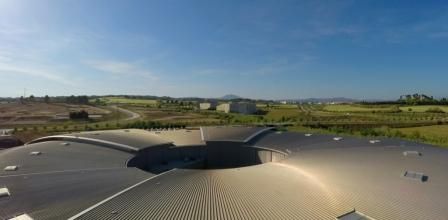
17/02/2016
Barcelona Synchrotron Park, a Park with a (Pre)History
Barcelona Synchrotron Park, a Park with a (Pre)History
By the end of January, the catalogue of the exhibition entitled Before Alba organized by the city council of Cerdanyola (where the Barcelona Synchrotron Park - BSP and ALBA synchrotron are located) and the Ca n’Oliver city museum was presented. It is published by the Barcelona Synchrotron Park.
This exhibition, which will travel throughout Catalonia from now on, presents the results of the archeological digs carried out around the synchrotron. These results give information about how human societies had been continuously living over millennia in the territory currently occupied by BSP or the campus of the Universitat Autònoma de Barcelona (UAB).
Archeological discoveries made over the past 30 years in the context of the economical development of this so-called del Vallès plain (construction of the Vallès Technology Park – PTV and then BSP, extension of the UAB campus...) range from the Paleolithic era to the Spanish Civil War (1936-1939) and bring us to a conclusion: if BSP aims at attracting innovative companies, women and men didn’t wait for BSP to innovate: for example, as Before Alba evidences, people from this territory invented centuries ago new ways to seal silos in order to preserve the stored seeds.
Different examples from these digs can be pointed out: flint tools from the Upper Paleolithic period (35,000-25,000 B.C.) near the UAB Mathematical Research Center, the pot from Neolithic period (4,000-3,800 B.C.) at the UAB sport center, the Bronze Age (1,800-750 B.C.) collective tomb discovered where the synchrotron is, 12th century silos o German bombs from the Spanish Civil War at PTV.
“Time is present in motion” used to say the well-known Catalan paleontologist Miquel Crusafont. In this implacable dynamic process, Before Alba exhibition, to which BSP contributes, allows to go back in time and to put into perspective the here and now that are up to us to live out.
This exhibition, which will travel throughout Catalonia from now on, presents the results of the archeological digs carried out around the synchrotron. These results give information about how human societies had been continuously living over millennia in the territory currently occupied by BSP or the campus of the Universitat Autònoma de Barcelona (UAB).
Archeological discoveries made over the past 30 years in the context of the economical development of this so-called del Vallès plain (construction of the Vallès Technology Park – PTV and then BSP, extension of the UAB campus...) range from the Paleolithic era to the Spanish Civil War (1936-1939) and bring us to a conclusion: if BSP aims at attracting innovative companies, women and men didn’t wait for BSP to innovate: for example, as Before Alba evidences, people from this territory invented centuries ago new ways to seal silos in order to preserve the stored seeds.
Different examples from these digs can be pointed out: flint tools from the Upper Paleolithic period (35,000-25,000 B.C.) near the UAB Mathematical Research Center, the pot from Neolithic period (4,000-3,800 B.C.) at the UAB sport center, the Bronze Age (1,800-750 B.C.) collective tomb discovered where the synchrotron is, 12th century silos o German bombs from the Spanish Civil War at PTV.
“Time is present in motion” used to say the well-known Catalan paleontologist Miquel Crusafont. In this implacable dynamic process, Before Alba exhibition, to which BSP contributes, allows to go back in time and to put into perspective the here and now that are up to us to live out.
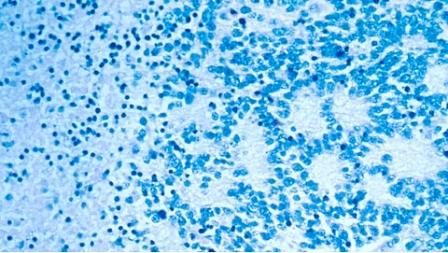
10/02/2016
New mechanism of anti-tumour action for the new drug developped at the UAB
New mechanism of anti-tumour action for the new drug developped at the UAB
A team of UAB researchers and collaborators from the Catalan biotech company Ability Pharmaceuticals (UAB Research Park, Barcelona Synchrotron Park partner), have described a new mechanism of anti-tumour action, identified during the study and development of the new drug ABTL0812.
The study, which has been published in the prestigious journal Clinical Cancer Research, was coordinated by Dr José Miguel Lizcano from the UAB Institute of Neurosciences and Department of Biochemistry and Molecular Biology.
Through the newly identified mechanism, ABTL0812 attacks tumour cells without affecting healthy cells, causing their death by autophagy without activating apoptosis (programmed cell death). It is the first anti-tumour drug to act in this way.
ABTL0812 has recently undergone Clinical Phase I trials in patients with advanced cancer, showing efficacy in several patients (long term stabilization) as well as low toxicity and high tolerability. Clinical Phase II trials are due to start soon in patients with endometrial cancer and lung squamous cell carcinoma.
The study, which has been published in the prestigious journal Clinical Cancer Research, was coordinated by Dr José Miguel Lizcano from the UAB Institute of Neurosciences and Department of Biochemistry and Molecular Biology.
Through the newly identified mechanism, ABTL0812 attacks tumour cells without affecting healthy cells, causing their death by autophagy without activating apoptosis (programmed cell death). It is the first anti-tumour drug to act in this way.
ABTL0812 has recently undergone Clinical Phase I trials in patients with advanced cancer, showing efficacy in several patients (long term stabilization) as well as low toxicity and high tolerability. Clinical Phase II trials are due to start soon in patients with endometrial cancer and lung squamous cell carcinoma.
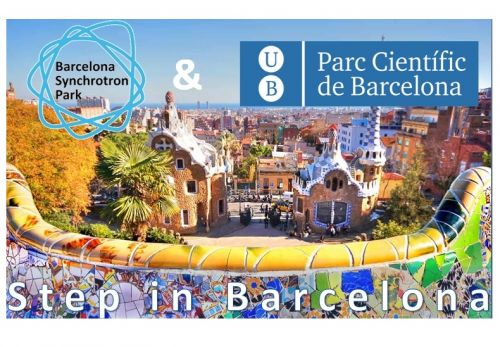
03/02/2016
Step in Barcelona
Step in Barcelona
Both Barcelona Synchrotron Park (BSP) and Parc Científic de Barcelona (PCB) are working with Pharmaphenix consulting company on their joined promotion in Korea, especially among companies from healthcare, medtech and ICT sectors.
Thanks to Pharmaphenix’s team in Seoul, a specific product adapted to these companies’ needs was developed. This so-called Step in Barcelona initiative consists in offering companies a 1-4 weeks stay in PCB with a tailor made support.
With this offer, a Korean company that looks at setting up in Europe will find a very concrete way to analyze this market and appreciate the importance of Barcelona in healthcare, medtech and ICT sectors and the adequacy of both PCB and BSP spaces and services.
This initiative is supported by ACCIÓ, the Catalan public agency in charge of attracting foreign investments.
Step in Barcelona brochure in English or in Korean
Thanks to Pharmaphenix’s team in Seoul, a specific product adapted to these companies’ needs was developed. This so-called Step in Barcelona initiative consists in offering companies a 1-4 weeks stay in PCB with a tailor made support.
With this offer, a Korean company that looks at setting up in Europe will find a very concrete way to analyze this market and appreciate the importance of Barcelona in healthcare, medtech and ICT sectors and the adequacy of both PCB and BSP spaces and services.
This initiative is supported by ACCIÓ, the Catalan public agency in charge of attracting foreign investments.
Step in Barcelona brochure in English or in Korean
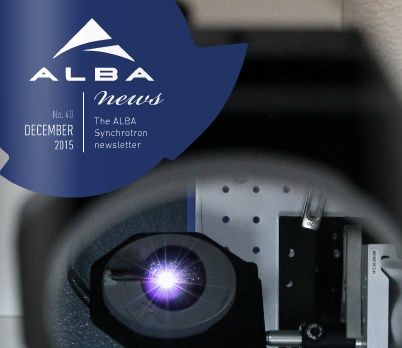
27/01/2016
ALBA News
ALBA News
The new issue of ALBA News magazine presents science highlights and technical developments of ALBA's beamlines and accelerators as well as the main milestones and activities developed in the facility in the last 6 months.
This issue includes among others:
Read online ALBA News here.
You can also download ALBA News here.
This issue includes among others:
- A special report that explores the attosecond time dynamics of matter with soft X-rays in collaboration with the ALBA Synchrotron.
- Information about how researchers use ALBA's techniques for imaging the properties of buried magnetic domains.
- An update on the construction of the new infrared ALBA beamline that will be operative by the end of this year.
- A joined Toyota Motor Europe (TME) and ICMAB-CSIC research center article about the industrial use of ALBA in research on rechargeable batteries.
Read online ALBA News here.
You can also download ALBA News here.
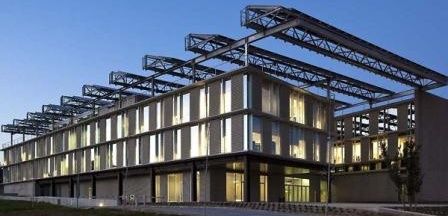
21/01/2016
SENER celebrates its 60th anniversary
SENER celebrates its 60th anniversary
The SENER engineering and technology group with Catalan headquarters in the Barcelona Synchrotron Park (BSP) celebrates its 60th anniversary. The company that was founded in 1956 in Bilbao, Spain, by Enrique de Sendagorta was initially a technical office specialized in the shipbuilding industry. In this sector, SENER developed in the sixties the FORAN software for the design and construction of ships that enabled the company to start its internationalization and that is still, to this day, a global benchmark.
Today, SENER is a 6,000-employee multinational company with a presence in 16 countries (Spain, Algeria, Brazil, Chile, China, Colombia, South Korea, United Arab Emirates, United States, India, Japan, Mexico, Poland, Portugal, United Kingdom) with an activity carried out in 3 main areas: engineering and construction, aeronautical industry and energy and environment. The important presence in Mexico can be mentioned with more than 1,000 people working in the engineering and construction field or in the ITP plane engines company founded by SENER in 1989, of which it currently holds a 53% share.
Congratulations!
Image: SENER building in the Barcelona Synchrotron Park
Today, SENER is a 6,000-employee multinational company with a presence in 16 countries (Spain, Algeria, Brazil, Chile, China, Colombia, South Korea, United Arab Emirates, United States, India, Japan, Mexico, Poland, Portugal, United Kingdom) with an activity carried out in 3 main areas: engineering and construction, aeronautical industry and energy and environment. The important presence in Mexico can be mentioned with more than 1,000 people working in the engineering and construction field or in the ITP plane engines company founded by SENER in 1989, of which it currently holds a 53% share.
Congratulations!
Image: SENER building in the Barcelona Synchrotron Park
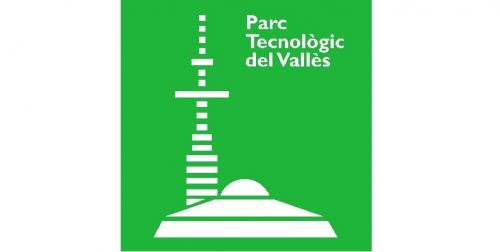
15/01/2016
Parc Tecnològic del Vallès: Arrival of FERRER and Accreditation of SEVIBE CELLS
Parc Tecnològic del Vallès: Arrival of FERRER and Accreditation of SEVIBE CELLS
The Parc Tecnològic del Vallès (PTV) is the oldest technology park in Spain (1987). PTV can be considered as the initial phase of a more global project of a territory designed to attract innovative companies in the environment of the Universitat Autònoma de Barcelona. This project has matured with the second phase corresponding to the creation of the Barcelona Synchrotron Park (BSP) around the ALBA synchrotron operative since 2012.
With 133 companies (2,760 employees, total turnover of 845 million euros), PTV recently received two good news from the healthcare sector:
On one hand, FERRER pharmaceutical multinational company has started activities in PTV with the creation of a research center devoted to new technologies for medication administration.
On the other hand, SEVILLE CELLS, which is already settled in PTV, has received the AABB accreditation (American Association of Blood Banks) and therefore becomes the 5th blood and tissue bank among the 117 banks in Europe (the first one in Spain) to be internationally certified for cell therapy. It can be mentioned that the FAMICORD European group to which SEVIBE CELLS belongs already carried out 127 cord blood stem cells transplants, making it the leader in Europe.
With 133 companies (2,760 employees, total turnover of 845 million euros), PTV recently received two good news from the healthcare sector:
On one hand, FERRER pharmaceutical multinational company has started activities in PTV with the creation of a research center devoted to new technologies for medication administration.
On the other hand, SEVILLE CELLS, which is already settled in PTV, has received the AABB accreditation (American Association of Blood Banks) and therefore becomes the 5th blood and tissue bank among the 117 banks in Europe (the first one in Spain) to be internationally certified for cell therapy. It can be mentioned that the FAMICORD European group to which SEVIBE CELLS belongs already carried out 127 cord blood stem cells transplants, making it the leader in Europe.









